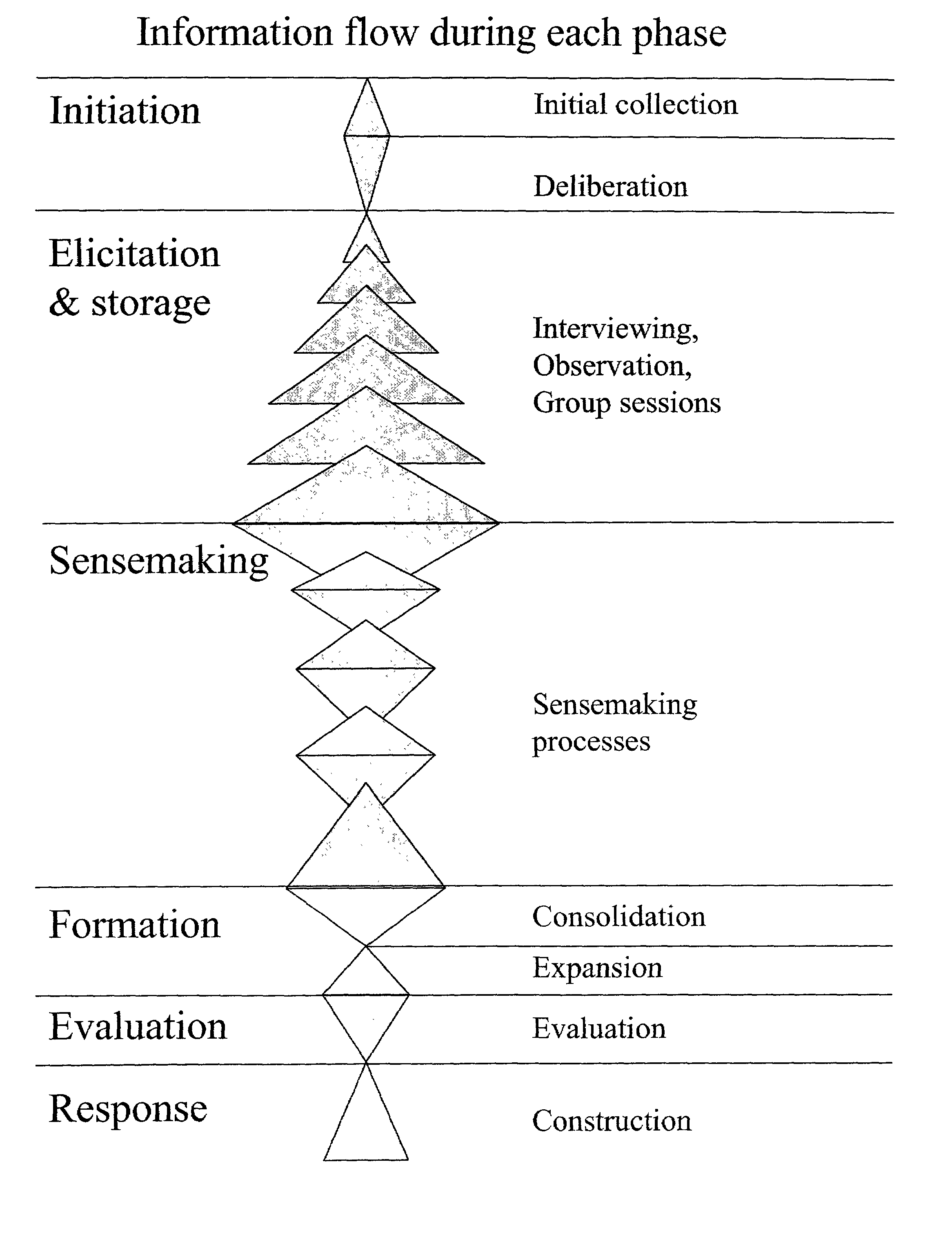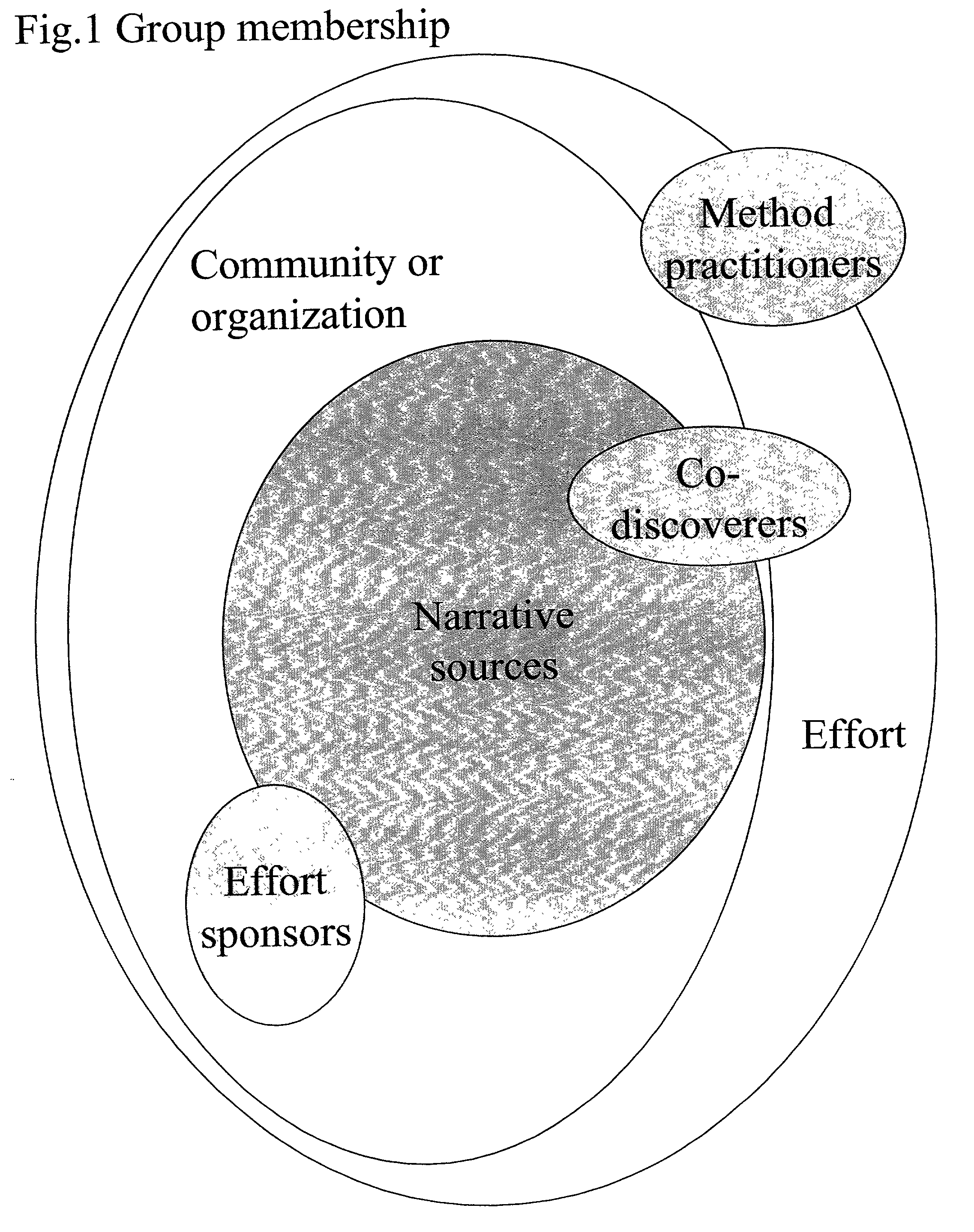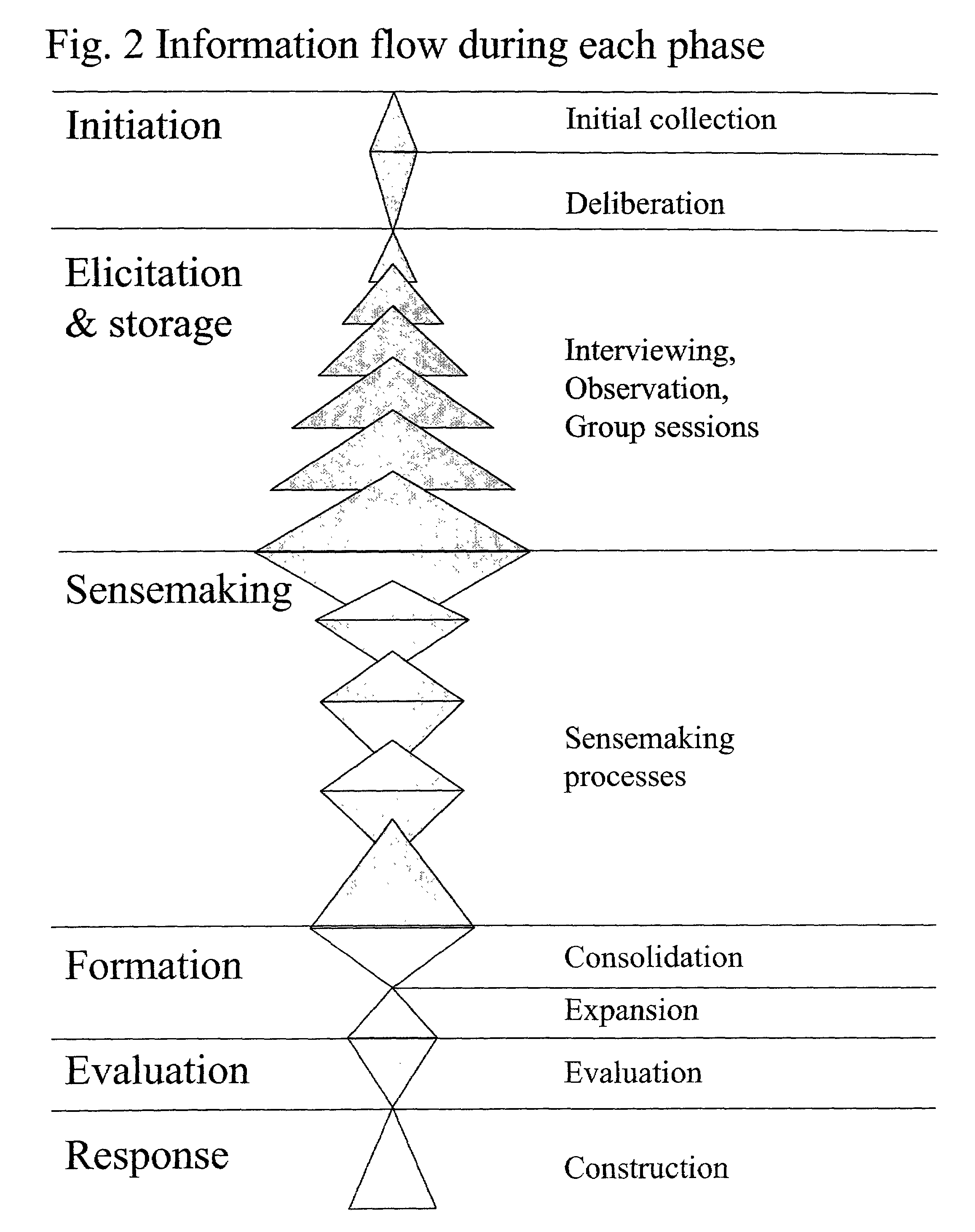Story-based organizational assessment and effect system
- Summary
- Abstract
- Description
- Claims
- Application Information
AI Technical Summary
Benefits of technology
Problems solved by technology
Method used
Image
Examples
Embodiment Construction
[0055]The invention comprises the following phases: initiation, elicitation, common sensemaking, formation of options, evaluation of options, and response. The elicitation and sensemaking phases are always included, but the other phases may be more or less evident depending on the nature and scope of the effort and the characteristics of the given organizations or communities. There is also some interaction among phases, in the sense that some activities occurring in the same relatively short time frame may address more than one of the phases. For example, a single workshop may include elements of elicitation and sensemaking, or even sensemaking and some response. FIG. 2 shows the conceptual focusing (broadening) and integrating (narrowing) that occurs during all phases of the system (these terms will be defined later) while FIG. 4 indicates the methods used during the execution of the various phases. FIG. 3 lists the outputs of these activities.
[0056](To reduce verbiage, we will he...
PUM
 Login to View More
Login to View More Abstract
Description
Claims
Application Information
 Login to View More
Login to View More - R&D
- Intellectual Property
- Life Sciences
- Materials
- Tech Scout
- Unparalleled Data Quality
- Higher Quality Content
- 60% Fewer Hallucinations
Browse by: Latest US Patents, China's latest patents, Technical Efficacy Thesaurus, Application Domain, Technology Topic, Popular Technical Reports.
© 2025 PatSnap. All rights reserved.Legal|Privacy policy|Modern Slavery Act Transparency Statement|Sitemap|About US| Contact US: help@patsnap.com



